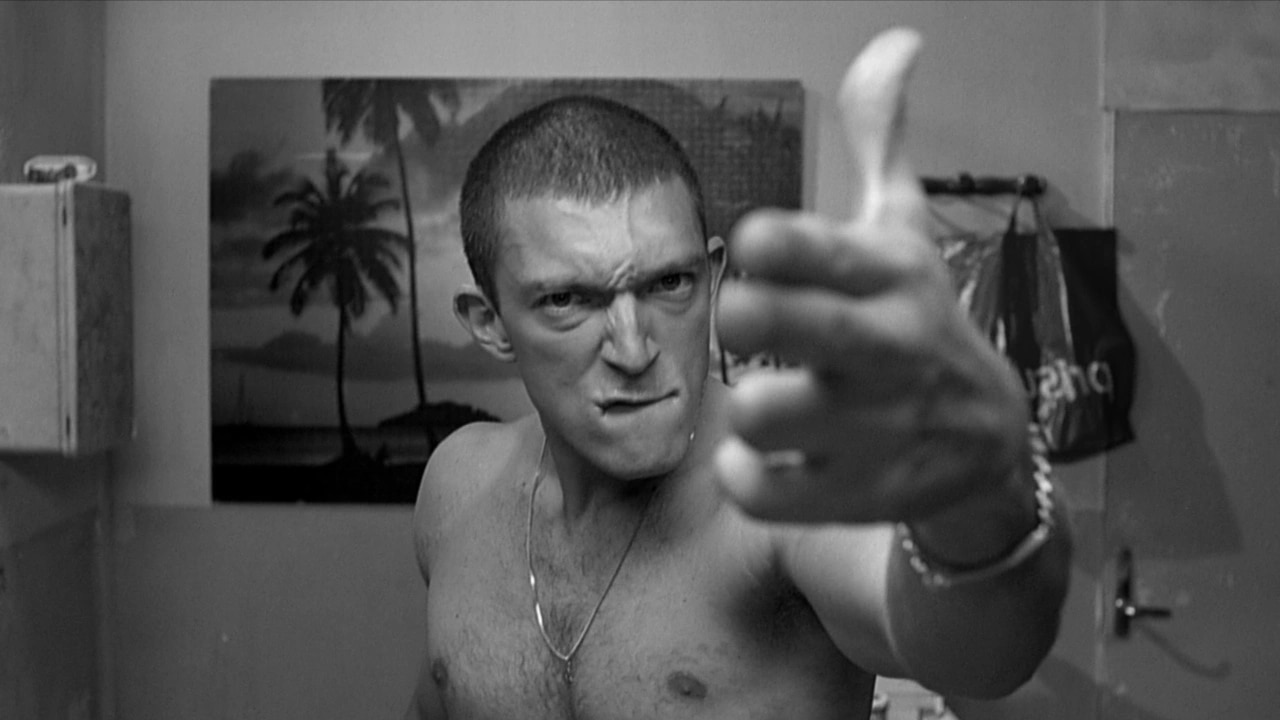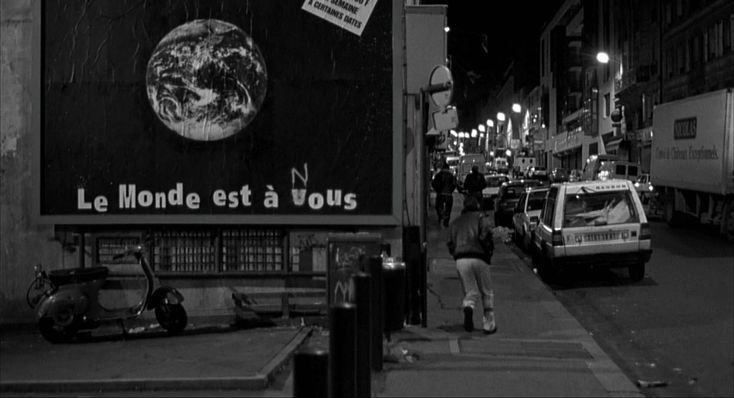Then as Now
It is 1995. It is 2024. Twenty-nine years have passed since the young Mathieu Kassovitz won the Best Director Award at the Cannes Film Festival with a movie set in the Parisian suburbs in the aftermath of clashes between civilians and police forces. It is a script that we have seen repeated time and time again over the years. The driving force behind the director’s creation of the screenplay for his stunning second movie was the outrage over the killing of 17-year-old Zairean immigrant Makomé M'Bowole in a police station in April 1993.
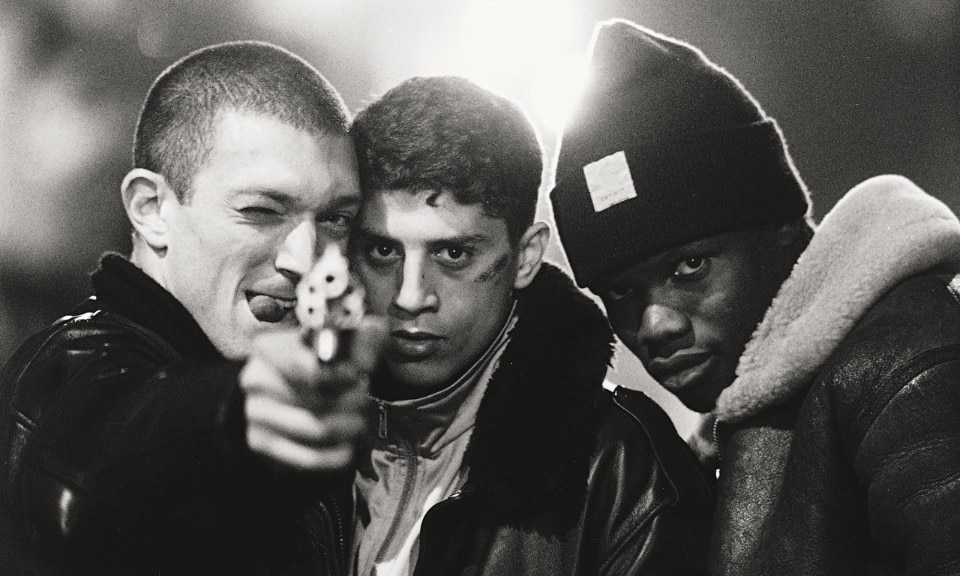
The Importance of Black and White
Kassovitz opens with archive images of urban riots in the French suburbs, cutting to a direct gaze into the camera by one of the protagonists: Saïd (Saïd Taghmaoui), a young Maghrebi friend of Hubert (Hubert Koundé), a second-generation Afro-Frenchman, and Vinz (Vincent Cassel), a Jew. This mix of different cultures, origins, ethnicities, and personalities is perfectly blended and balanced. The director follows them between buildings, parking garages, public gardens, on rooftops, and in small squares, drawing a harmonious and, in some respects, welcoming suburban geography.
The elegiac black and white neutralizes the fury of colors, leaving room for the full democratic range of shades. In fact, the history of art up to the 21st century was based more on black-and-white photography than on the study of color prints, since black-and-white, especially in painting, allowed for greater focus on the composition of drawings and paintings as well as more precise identification of the distribution of pictorial masses. Kassovitz’s elegant black and white allows us to deeply analyze the relationships between human beings and between humans and their environment, giving prominence to sociological aspects over emotional ones.
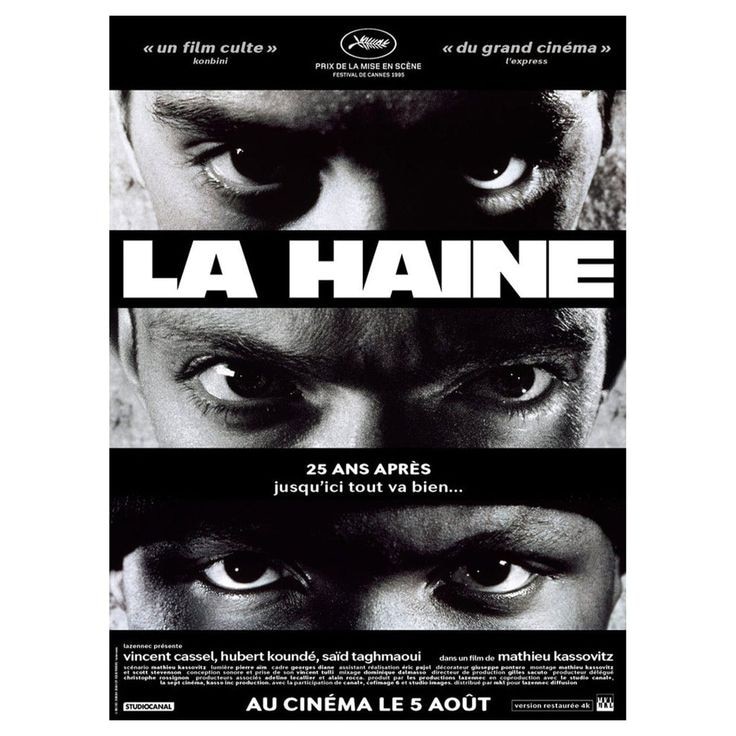
Suburbs, City, Light, Darkness
Daylight floods the suburban areas where the protagonists move, neglected and driven to hysteria by the absence of a future, which they demand through spray-painted messages on walls and billboards. Kassovitz follows them for an entire day, entering their homes, introducing us to their families, and accompanying them in their angry interactions with everyone they meet along the way. Vinz, the most prone to provocation and anger, finds a gun lost by a policeman the day before and takes possession of it, waiting to unleash his rage and seek revenge for his friend who was beaten and whom he is not even allowed to visit.
This mix of different cultures, origins, ethnicities, and personalities is perfectly blended and balanced. The director follows them between buildings, parking garages, public gardens, on rooftops, and in small squares, drawing a harmonious and, in some respects, welcoming suburban geography.
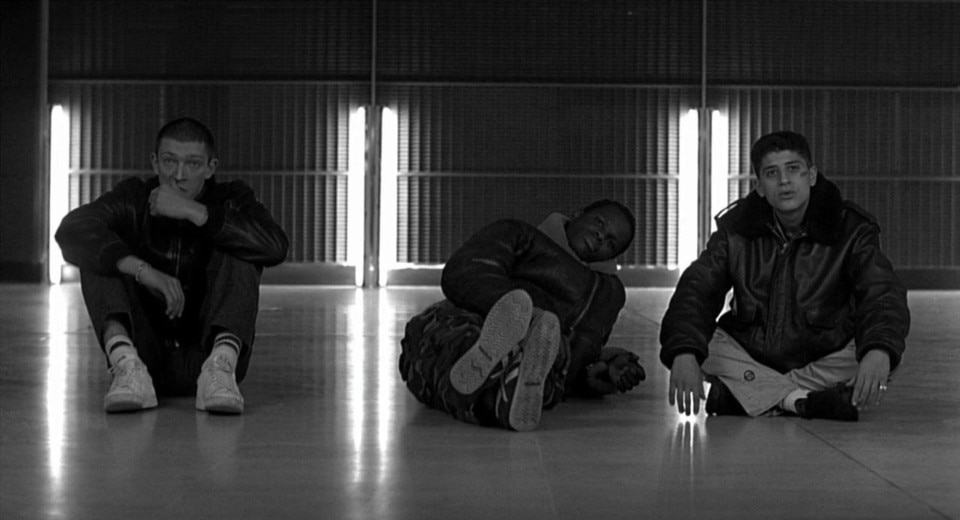
Midway through the movie, the action shifts to the capital, to Paris, which looms behind the three young men until it indistinctly fades into the background. Far from being the ‘Ville Lumière,’ it is rather a place of darkness and night where Saïd, Hubert, and Vinz wander aimlessly, rejected, constantly threatened, and harassed by a classist and racist white France that encompasses them like laboratory rats in favor of institutionalized violence.
Anatomy of a Fall
In the depiction of this dichotomous urban and suburban habitat, elements of international popular culture are inserted, such as references to Scorsese’s Taxi Driver, Cimino’s The Deer Hunter, or, musically, a proud Édith Piaf mixed with rap rhythms accompanying the bird’s-eye view of the residential buildings in the suffering suburbs.
The dawn of the return to the suburbs does not represent a return to a protected area but rather to yet another encounter-clash that culminates in the crucial gunshot, with Saïd once again in the foreground, looking into the camera as in the opening, but this time closing his eyes. La Haine is the story of individuals, institutions, and a society in free fall from a fifty-story building: so far so good, so far so good. The problem is not the fall, which has been constant and has been going on for thirty years now. The problem is the landing. However, contemporaneity seems not to have landed. It seems to have crashed and shattered on the ground.


